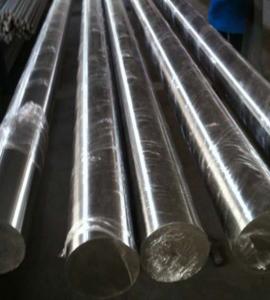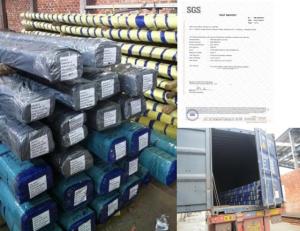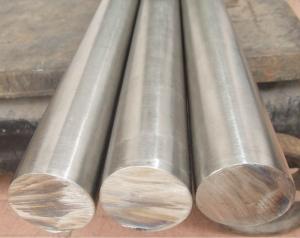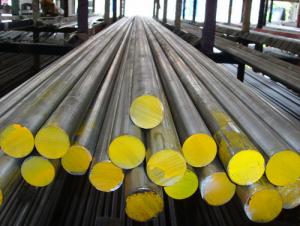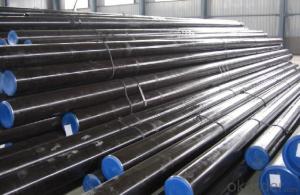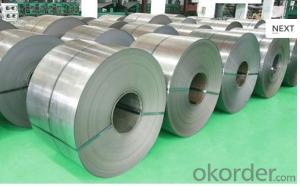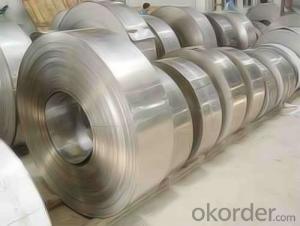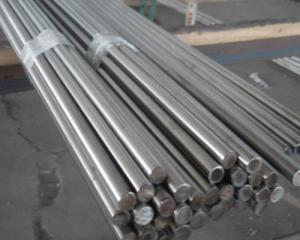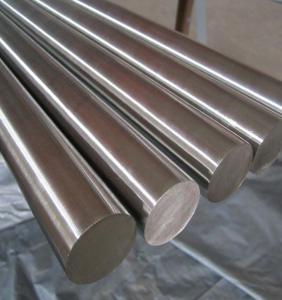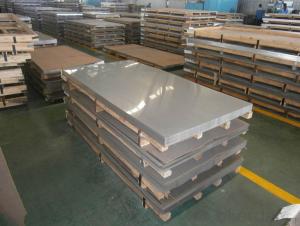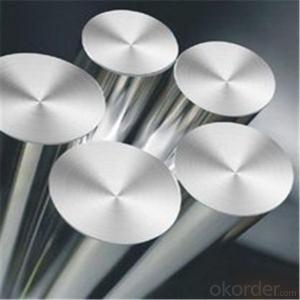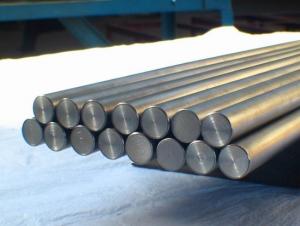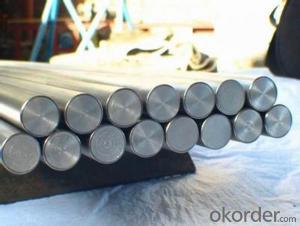1.4301 Stainless Steel Bar
- Loading Port:
- China Main Port
- Payment Terms:
- TT or LC
- Min Order Qty:
- 5 Tons m.t.
- Supply Capability:
- 1000 Tons m.t./month
OKorder Service Pledge
OKorder Financial Service
You Might Also Like
Stainless Steel Bar
Stainless Steel Round Bright Bar
Hot-rolled Stainless Steel Black Bar
Grades:201、202、301、302、303、304、316、316L、321 etc
|
Diameter (mm) |
weight (kg/m) |
Diameter (mm) |
weight (kg/m) |
Diameter (mm) |
weight (kg/m) |
Diameter (mm) |
weight (kg/m) |
|
2 |
0.025 |
14 |
1.221 |
30 |
5.607 |
50 |
15.575 |
|
3 |
0.056 |
15 |
1.402 |
32 |
6.38 |
55 |
18.846 |
|
4 |
0.1 |
16 |
1.595 |
34 |
7.202 |
60 |
22.428 |
|
5 |
0.156 |
18 |
2.019 |
35 |
7.632 |
65 |
26.322 |
|
6 |
0.224 |
19 |
2.249 |
36 |
8.074 |
70 |
30.527 |
|
7 |
0.305 |
20 |
2.492 |
38 |
8.996 |
75 |
35.044 |
|
8 |
0.399 |
22 |
3.015 |
40 |
9.968 |
80 |
39.872 |
|
9 |
0.505 |
24 |
3.588 |
42 |
10.99 |
85 |
45.012 |
|
10 |
0.623 |
25 |
3.894 |
45 |
12.616 |
90 |
50.463 |
|
11 |
0.754 |
27 |
4.542 |
46 |
13.183 |
95 |
56.226 |
|
12 |
0.897 |
28 |
4.884 |
48 |
14.354 |
100 |
62.3 |

- Q:Can stainless steel bars be used in the manufacturing of heat recovery steam generators?
- Yes, stainless steel bars can be used in the manufacturing of heat recovery steam generators. Stainless steel is known for its high corrosion resistance, strength, and heat resistance, making it suitable for applications that involve high temperatures and pressure, such as heat recovery steam generators.
- Q:Can stainless steel bars be used in the oil refining manufacturing industry?
- Yes, stainless steel bars can be used in the oil refining manufacturing industry. Stainless steel is resistant to corrosion and high temperatures, making it suitable for various applications in oil refining processes such as storage tanks, pipelines, and equipment. Its strength and durability make it a reliable material for handling the harsh conditions and corrosive substances involved in oil refining.
- Q:Can stainless steel bars be used in nuclear power plants?
- Yes, stainless steel bars can be used in nuclear power plants. Stainless steel is widely used in the construction of nuclear power plants due to its excellent corrosion resistance, high strength, and heat resistance properties. It is commonly used for various applications, including structural components, fuel storage containers, and piping systems within the nuclear facilities. Stainless steel's ability to withstand harsh radioactive environments and its resistance to corrosion make it a suitable material for ensuring the safety and long-term durability of nuclear power plants.
- Q:What is the price range of stainless steel bars?
- Several factors can influence the price range of stainless steel bars, including the grade of stainless steel, the bar's size and shape, and the supplier or manufacturer. Typically, the price of stainless steel bars can vary from approximately $3 to $10 per pound. Nevertheless, specialty or custom bars may come at a higher price. To secure the best deal, it is advisable to reach out to multiple suppliers or manufacturers and compare prices.
- Q:Can stainless steel bars be used in cryogenic applications?
- Stainless steel bars are indeed capable of being utilized in cryogenic applications due to their exceptional low-temperature properties. The renowned attributes of stainless steel, such as its ability to uphold mechanical strength, corrosion resistance, and dimensional stability even under exceedingly low temperatures, render it highly suitable for deployment in cryogenic environments. This renders stainless steel bars ideal for a diverse range of applications, including cryogenic storage tanks, equipment for liquid natural gas (LNG), as well as aerospace components. Moreover, stainless steel exhibits commendable thermal conductivity, thereby facilitating efficient heat transfer within cryogenic systems. It is crucial to select the appropriate grade of stainless steel that has been purposefully designed for cryogenic applications, as this ensures optimal performance and reliability.
- Q:Can stainless steel bars be hardened by heat treatment?
- Heat treatment can harden stainless steel bars. The process is called precipitation hardening or age hardening. Stainless steel bars, particularly those with alloying elements like nickel, can undergo a solution annealing heat treatment followed by rapid cooling or quenching. Once quenched, the bars are subjected to a low-temperature aging treatment to enable the precipitation of fine particles within the steel matrix. This precipitation increases the material's strength and hardness. Consequently, this heat treatment process greatly enhances the mechanical properties of stainless steel bars, making them suitable for a wide range of applications that demand greater strength and hardness.
- Q:What is the difference between stainless steel bars and stainless steel angles?
- Various applications in the construction and manufacturing industries make use of both stainless steel bars and stainless steel angles. While these two may seem similar at first glance, there are distinct differences between them. The primary distinction lies in their shape and structural design. Stainless steel bars typically have a straight shape with a uniform cross-section, which can be round, square, or hexagonal. They are commonly employed for structural support, as machinery shafts, or as components in the construction of buildings, bridges, and other infrastructure. In contrast, stainless steel angles have an L-shape, with two perpendicular legs of equal or unequal length. This makes them well-suited for applications that require right-angle joints or corners, such as framework, braces, and structural support in architectural designs, machinery, and equipment. Another important difference lies in their manufacturing process. Stainless steel bars are usually produced through hot rolling, cold drawing, or forging processes, resulting in a smooth and uniform surface finish. Conversely, stainless steel angles are typically formed by hot rolling or laser fusion, resulting in a slightly rougher surface finish due to the welding process. When it comes to versatility, stainless steel bars offer a wider range of dimensions and sizes compared to stainless steel angles. This allows for greater flexibility in various applications, as bars can be cut, drilled, bent, or shaped to fit specific requirements. Stainless steel angles, on the other hand, may have limitations in terms of size and shape due to their L-shaped design. In summary, the main distinction between stainless steel bars and stainless steel angles lies in their shape and structural design. Bars have a straight shape with a uniform cross-section, suitable for structural support and various applications, while angles have an L-shape, making them ideal for right-angle joints and corners. Additionally, the manufacturing process, surface finish, and versatility also vary between the two.
- Q:Can stainless steel bars be used in brewing and distilling applications?
- Certainly, brewing and distilling applications can definitely make use of stainless steel bars. With its remarkable resistance to corrosion and oxidation, stainless steel proves to be an ideal material for brewing and distilling equipment. It is quite common to employ stainless steel bars for the construction of brewing vessels like fermenters, mash tuns, and brewing kettles, as well as distillation equipment such as stills and columns. The robustness and durability of these bars ensure that the equipment can endure the demanding conditions of brewing and distilling processes, including high temperatures, pressure, and corrosive elements. Furthermore, stainless steel is non-reactive, guaranteeing that it does not introduce any undesired flavors or chemicals to the final product. In summary, due to their exceptional resistance to corrosion, long-lasting nature, and hygienic properties, stainless steel bars are the preferred choice for brewing and distilling applications.
- Q:What are the applications of flat stainless steel bars?
- The unique characteristics and properties of flat stainless steel bars make them highly versatile and applicable in a wide range of industries. Here are some of the key ways in which they are utilized: 1. Construction and architecture: In the construction industry, flat stainless steel bars are essential for providing structural support, framing, and reinforcement. Their durability, strength, and resistance to corrosion make them particularly valuable for building facades, curtain walls, and roofing systems. 2. Manufacturing and industrial applications: Stainless steel bars play a crucial role in various manufacturing processes, including machine building, automotive manufacturing, and aerospace industries. They are used to create components, brackets, supports, and frames due to their high strength, heat resistance, and corrosion resistance. 3. Food and beverage industry: The food and beverage industry heavily relies on flat stainless steel bars in commercial kitchens, food processing plants, and breweries. They are utilized to create food preparation surfaces, countertops, equipment, and storage units because of their hygienic properties, resistance to staining, and ease of cleaning. 4. Marine and offshore applications: The marine and offshore industries extensively use stainless steel bars due to their exceptional resistance to saltwater corrosion. They are employed in the construction of ships, offshore platforms, and other marine structures. Additionally, they are used to make fittings, fasteners, and propeller shafts. 5. Chemical and pharmaceutical industries: Stainless steel bars are highly valued in the chemical and pharmaceutical sectors because of their resistance to aggressive chemicals and high temperatures. They are utilized to create tanks, reactors, pipes, and other equipment that come into contact with corrosive substances. 6. Decorative and artistic applications: The aesthetic appeal and versatility of flat stainless steel bars make them a popular choice for decorative and artistic endeavors. They can be shaped, bent, and polished to create various designs, sculptures, furniture, and architectural elements. In conclusion, the applications of flat stainless steel bars span across various industries, encompassing construction, manufacturing, the food sector, marine and offshore operations, the chemical and pharmaceutical fields, as well as decorative and artistic pursuits. Their strength, durability, resistance to corrosion, and aesthetic appeal make them highly sought-after in numerous sectors.
- Q:Can stainless steel bars be used in chemical processing?
- Yes, stainless steel bars can be used in chemical processing. Stainless steel is highly resistant to corrosion and can withstand exposure to a wide range of chemicals, making it suitable for use in various chemical processing applications.
1. Manufacturer Overview |
|
|---|---|
| Location | Jiangsu, China |
| Year Established | 2010 |
| Annual Output Value | above US$8 million |
| Main Markets | East Asia, Middle East, West Europe |
| Company Certifications | |
2. Manufacturer Certificates |
|
|---|---|
| a) Certification Name | |
| Range | |
| Reference | |
| Validity Period | |
3. Manufacturer Capability |
|
|---|---|
| a)Trade Capacity | |
| Nearest Port | Shanghai |
| Export Percentage | |
| No.of Employees in Trade Department | above 50 people |
| Language Spoken: | English, Chinese, Arabic |
| b)Factory Information | |
| Factory Size: | about 15000 square meter |
| No. of Production Lines | above 4 |
| Contract Manufacturing | OEM Service Offered,Design Service Offered |
| Product Price Range | Average |
Send your message to us
1.4301 Stainless Steel Bar
- Loading Port:
- China Main Port
- Payment Terms:
- TT or LC
- Min Order Qty:
- 5 Tons m.t.
- Supply Capability:
- 1000 Tons m.t./month
OKorder Service Pledge
OKorder Financial Service
Similar products
New products
Hot products
Related keywords
